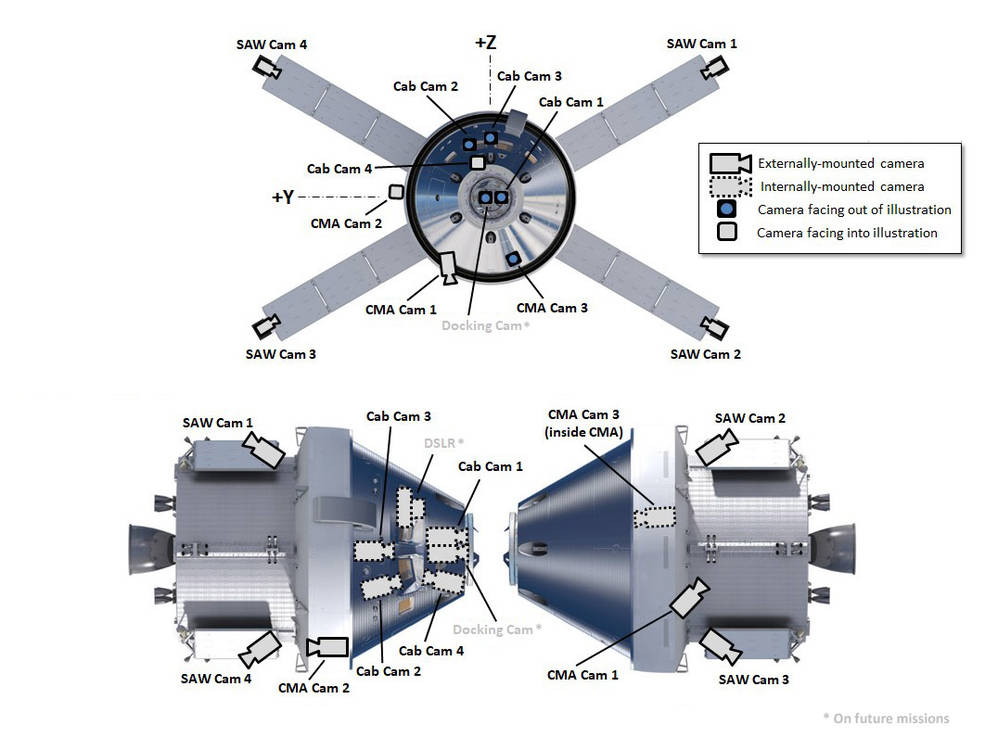NASA adapted consumer cameras for amazing Artemis 1 space mission
Cameras used in the NASA Artemis 1 mission are consumer cameras specially adapted for use in space

On November 16, NASA launched its most powerful rocket yet into space. With 24 cameras on board all preprogrammed to capture the most important aspects of the mission, it’s hoped that its success will make a manned mission to Mars possible one day.
• Discover awesome Black Friday telescope deals
The NASA Space Launch System is NASA’s most powerful rocket and over the next month, it will travel more than 40,000 miles beyond the moon and back to earth. During the mission named Artemis 1, the 24 cameras on board will document landings, takeoffs and the external condition of the rocket while also providing never-before-seen perspectives of the earth and moon.
• Discover the best cameras for astrophotography and start capturing stunning night skies
In a blog posted on the NASA website, Erika Peters explains where and why there are so many cameras fitted to the internal and external of the spacecraft. Each camera is carefully designed to capture specific activities and positioned accordingly.
There are four cameras attached to each of the solar array wings to monitor solar array deployment and the overall condition of the spacecraft. A further four cameras are attached to the engine facing up to the Orion spacecraft, two cameras will capture boosters sequence separation and two cameras attached to the launch vehicle adapter will record the core separation. These eight cameras will be carefully preprogrammed with a set sequence and used during launch and ascent.

According to David Melendrez, the imagery integration lead for the Orion Program at NASA’s Johnston Space Center in Houston, Texas the cameras attached to the Solar ray wings are “off-the-shelf” cameras that “have been highly modified for use in space.” Despite our best efforts, we have been unable to ascertain which cameras have been used but in the past, NASA has been known to use Hasselblad, Leica and Nikon.
Get the Digital Camera World Newsletter
The best camera deals, reviews, product advice, and unmissable photography news, direct to your inbox!
Each of the 24 cameras is powered by solar energy collected by the arrays. Inside the Orion spacecraft itself, there are 8 cameras in total which will be used to help navigate the rocket and pinpoint Orion’s location, even in deep space. Not only can the cameras capture still images, but they can also record in 4K video too although we won’t get to see that footage in its high-definition glory until it returns due to bandwidth limitations.
Wireless cameras positioned inside the spacecraft will give scientists an idea of what the astronauts might see while on the Artemis missions; one looks out of the pilot’s front window, another over the shoulder over the commander's sear and a third looks out toward the launch abort system. Being able to monitor how the aircraft fares during the mission and what the astronauts will be exposed to will help ascertain whether a manned spacecraft can be safely sent into orbit.
It's been 50 years since NASA last sent astronauts to the moon on the Apollo 17 mission and in that time a lot has changed. Not only has our technology advanced but so have our equality policies. Included in the 18-strong Artemis team are women, and people of color making it a space mission first for NASA and in the words of Neil Armstrong, "That's one small step for man, one giant leap for mankind."
Check out the best lenses for astrophotography: fast ultra-wide lenses for shooting the night sky.

Having studied Journalism and Public Relations at the University of the West of England Hannah developed a love for photography through a module on photojournalism. She specializes in Portrait, Fashion and lifestyle photography but has more recently branched out in the world of stylized product photography. Hannah spent three years working at Wex Photo Video as a Senior Sales Assistant, using her experience and knowledge of cameras to help people buy the equipment that is right for them. With eight years experience working with studio lighting, Hannah has run many successful workshops teaching people how to use different lighting setups.
